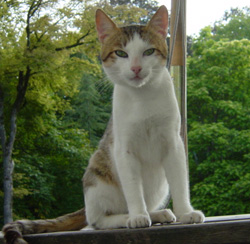Are You Able To Understand What Your Cat Is Telling You?
Cats are known for being very communicative. They express themselves just as much through sounds as through their body language.
Understand better what your cat wants to say
According to specialists, cats can make up to 16 different sounds whereas kittens can make 9.
For example, if a cat is miaowing constantly, it means it’s happy. On the other hand, if it has a slow high-pitch miaow, it tends to mean the cat is suffering and in pain.
If the cat is asking for something such as food or to be let out the door, it will make a long miaow to show it’s need. It will continue to insist until you have satisfied its demands.
To welcome you home every evening from a long days work, your cat will shout loudly running up to you with a vertical, slightly rounded end tail. This is a cats welcome position when it’s showing its joy.
Most of the time, it will roll about around your legs whilst purring to say, “I’m happy you’re here”.
Whenever it sees birds through the window, you will hear small, short miaows as your it clicks its teeth. This means, “I’d definitely eat that bird!”
The mother will make little noises to call for its babies.
A female cat in heat will make high-pitched screams, enough to wake the entire neighbourhood.
John Bradshaw, a researcher in feline communication, identified these different sounds made by cats all dependant on different situations.
Cat body language is just as important as sounds although more subtle. If you’re a good observer, you’ll be able to differentiate the different moods of your cat thanks to the way it carries its body.
When your cat slightly closes its eyes and lifts its head as you stroke it, it means it’s enjoying what you’re doing.
A cat that wants to be stroked will be very relaxed. Sometimes, it will lay on its back with its tummy to the sky to get a nice tummy rub. When this happens, you know your cat trusts you as it’s putting itself in a vulnerable position. In fact, wild cats never put themselves in this position.
When a cat gets scared, its tail drops under its body to protect it and puts more weight on the rear legs ready to run. Furthermore, its ears are pushed back, whiskers are flattened and pupils dilated.
If your cat is moving its tail, it means it is annoyed. Unlike dogs, it is not a sign of happiness in fact, it shows real anger.
Beware, if the cat is also spitting, or has spat, it means it’s about to attack.
Speaking to your cat
You can speak to your cat, and sometimes it will listen. If it does listen, you will know as i will look at you strangely, if you’re lucky it will even reply with a miaow. However, if it looks away, it means you’re boring it and it’s not interested. Some cats know their names and answer when called but this is not to be expected from all cats.
Now, it’s up to you to interpret what your little ball of fluff is saying to better understand it and spend many happy, harmonious years with it.

